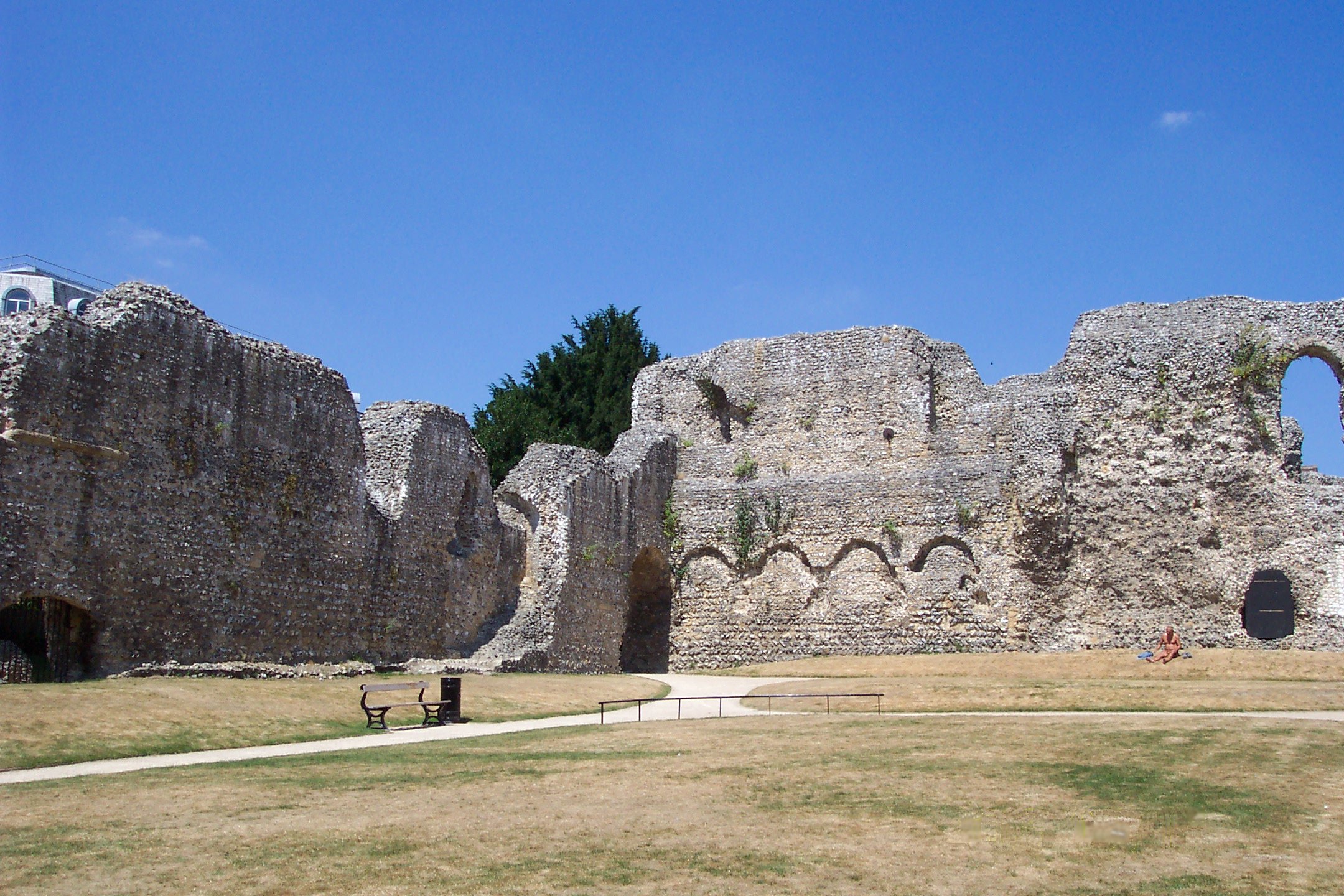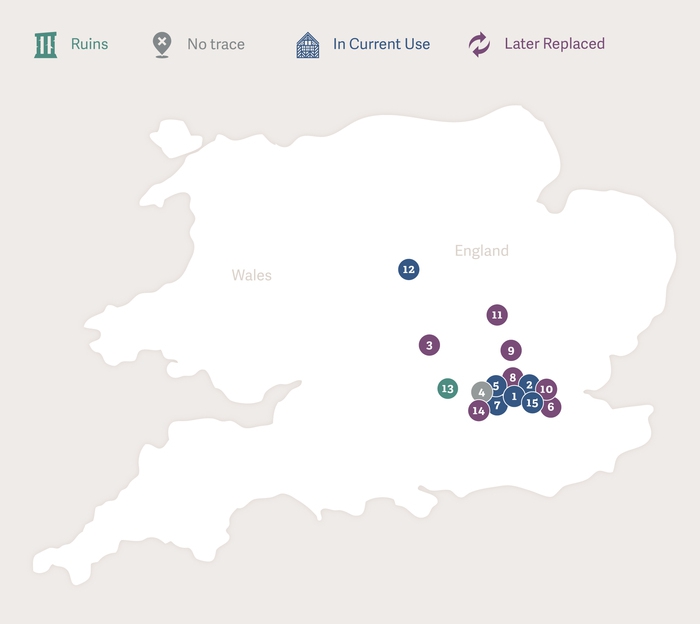Thomas More: Always a Londoner
Chapter 4 : King's Councillor
One of the few trips that More is known to have taken outside the round of London and the royal court, or on diplomatic trips to Europe, was a visit to Coventry (12), to his sister, Elizabeth, and her husband John Rastell. Rastell was, like More, a barrister. Leaving Coventry, he moved to London and became a successful printer - he published and printed More’s Utopia in 1516. He also had a position in the royal household, and some responsibility for the preparations for the Field of Cloth of Gold and also created a pageant for the Emperor’s 1522 visit. Rastell and More both fell foul of Henry VIII – More for refusing the Act of Succession, and Rastell, by now an MP, as a reformer, arguing against tithes.
Another foray More made from London was in 1518 when he rode to Reading Abbey (13) to be sworn in as a member of the King’s Council. Reading Abbey was an ancient foundation, founded by Henry I for the benefit of his own soul, that of his father, the Conqueror, his brother, William Rufus, and his first queen, Matilda of Scotland. Henry I was buried there, as was his second wife, Adeliza of Louvain.
The house was originally a Cluniac foundation, theoretically subject to the Abbey of Cluny in France, but this link did not endure and it became just like any other Benedictine house. The Abbey was much favoured by subsequent monarchs, who held court there and gave frequent gifts of land. The Abbot under Henry VIII was one of the royal chaplains and also a frequent correspondent of Arthur Plantagenet, Lord Lisle, and his wife, Honor Grenville, whose son attended the Abbey school. He also attended the funeral obsequies of Queen Jane Seymour at Windsor in 1537. Nevertheless, in 1539, the Abbot was hanged, drawn and quartered at Tyburn without trial.
The surrendered Abbey fell into disrepair, and the ruins are still visible. At the time of writing (September 2016) the ruins are being investigated for traces of Henry I’s tomb, in front of the high altar.

Once he was a member of the King’s Council, More was in almost constant attendance on the monarch, other than when he was sent on diplomatic missions. But the additional income, and the prestige, allowed him to build a new house for his extended family at Chelsea (14). Chelsea was a village on the road between Westminster and Hampton Court.
It would thus have been a convenient location for More between Henry’s two most frequent locations. This is the origin of the name the ‘King’s Road’ now a highly fashionable thoroughfare in Chelsea, which has been subsumed into the modern city. There was no bridge on the road in More’s time, but the ferry plied between Fulham on the north bank of the Thames and Putney on the south.
Although, so far as is known, Erasmus did not visit More at Chelsea, nevertheless he described the property:
‘More hath built near London upon the Thames a commodious house, neither mean nor subject to envy, yet magnificent enough; there he converseth with his family, his wife, his son and daughter-in-law, his three daughters and their husbands, with eleven grandchildren'
The grounds apparently stretched along the Thames between what is now Milman Street and Church Street, with the house centred where Beaufort Street is today. The memory of the house is preserved in the name of Roper’s Gardens, near the modern Chelsea Bridge.
After his death, More’s property was confiscated and the majority given to Sir William Paulet, later Earl of Winchester. It eventually found its way, like so much else, into the hands of Lord Burghley, whose son, the Earl of Salisbury, altered it considerably. It was later in the possession of the Duke of Beaufort and known as Beaufort House, but was pulled down in the mid-eighteenth century by Sir Hans Sloane.
More had intended to be buried in Chelsea Church, and the south chapel he had renovated still remains, with stone capitals possibly designed by Holbein, who had painted More and his family at Chelsea in 1527. The church was hit during the Blitz of 1941, but More’s chapel was less damaged than the rest of the building. The church was restored and re-consecrated.
Sir Thomas may have hoped to die and be buried in Chelsea, but a more tragic end awaited him. In mid-April 1534, he was taken from his Chelsea home to the Tower of London (15), his son-in-law, William Roper accompanying him in his own barge. As he was rowed downstream, passing Lambeth Palace, where he had served Morton, then Westminster, where he had served as Lord Chancellor, and saw the great spire of Old St Paul’s which had towered over his childhood home, he probably knew that he was gazing on them for the last time.
He emerged from the Tower only to take the short walk up Tower Hill, where he was executed on 6th July 1536. His body was buried within the Tower, in the Church of St Peter ad Vincula. His head was rescued from the pole on London Bridge on which it had been displayed by his devoted daughter, kept by her and then buried with her. Margaret’s remains are either at Chelsea, or in the vault of her Roper family at St Dunstan, Canterbury. In 1978, excavations in St Dunstan’s revealed the remains of a head in the vault, and it is possible that Margaret was reinterred there with her husband.
The map below shows the location of teh places associated with Thomas More discussed in this article.




